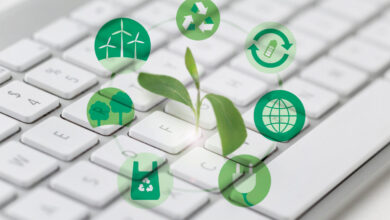The Role of Carbon Offsets in Achieving Carbon Neutrality

Explore the significance of carbon offsets and their potential in achieving carbon neutrality to combat climate change.
As the world struggles with the urgent need to address climate change, achieving carbon neutrality has emerged as a critical goal. Carbon neutrality refers to an equilibrium state where the emissions of carbon dioxide (CO2) and their removal or offsets engage in a harmonious exchange. While reducing emissions at their source remains the primary focus, carbon offsets play a vital role in the overall strategy to achieve carbon neutrality.
What are Carbon Offsets?
Carbon offsets are the ultimate carbon footprint erasers. Utilizing eco-magic, it allows individuals and organizations to counteract their CO2 emissions by investing in projects that combat climate change. These projects can take various forms, such as renewable energy initiatives, reforestation efforts, or energy efficiency programs. By investing in these projects, entities can effectively neutralize their carbon footprint and contribute to the global reduction of greenhouse gas emissions.
Steps to offset carbon emissions
An organization can offset its carbon emissions by the following three steps:
Calculate and measure emissions
Companies can follow specific protocols to accomplish this. One such protocol is the GHG Protocol, which is a widely recognized accounting standard used to measure and manage greenhouse gas (GHG) emissions. This protocol categorizes emissions into three scopes:
- Scope 1 refers to direct emissions stemming from sources owned or controlled by an organization.
- Scope 2 entails indirect emissions resulting from the purchase of electricity, steam, heating, and cooling resources by an organization.
- Scope 3 covers other indirect emissions that originate from an organization’s value chain.
These emissions are quantified in tons of carbon dioxide equivalent, encompassing various GHGs like methane and nitrous oxide. It is crucial for organizations to regularly evaluate their carbon footprints and incorporate them into sustainability reports and financial statements.
Reduce emissions where possible
After quantifying and pinpointing the origins of its emissions, an organization can establish a sustainability plan. The Science Based Target Initiative (SBTi), which supports the objectives of the Paris Agreement, offers comprehensive recommendations for emission reduction. The SBTi advocates for the utilization of 80% renewable electricity by 2025. Additionally, carbon reduction efforts can be implemented at an individual level through actions like adopting a more sustainable diet or transitioning to environmentally friendly modes of transportation, such as electric vehicles and hybrid locomotives on trains.
Offset remaining emissions
In cases where emissions cannot be completely eliminated, they can be offset through various means. Carbon offset projects involve the absorption or removal of carbon dioxide. To issue carbon credits, these projects must undergo certification.
These certifications ensure the credibility and accountability of offset projects, allowing organizations to effectively balance their carbon emissions.
Examples of carbon offsetting
Forestry
Tree planting initiatives aim to rehabilitate areas affected by deforestation. By planting trees, carbon absorption and sequestration take place. Without these trees, carbon that would otherwise be present in the atmosphere contributes to the exacerbation of global warming.
Agriculture
Farmers employ advanced technology and innovative techniques to optimize resource utilization and minimize crop wastage during cultivation.
Renewable energy
These initiatives substitute the usage of fossil fuels with clean and renewable energy sources, such as the power generated from wind farms.

In India, three carbon offsetting projects are running which diminish carbon emissions and provide carbon credits. They are – a 100 MegaWatt Wind Power project in Andhra Pradesh, a 100.5 MegaWatt Wind Power project in Madhya Pradesh, and two 50 MegaWatt Solar Photovoltaic Projects in Maharashtra. They all are accredited by the Gold Standard.
Waste management
These projects capture the methane produced during waste disposal in landfills.
Carbon sequestration
Projects implementing carbon capture and storage techniques aim to relocate carbon to locations where the likelihood of its release back into the atmosphere is minimal. These initiatives involve extracting carbon from the air and storing it in various reservoirs such as soil, wetlands, trees, and even geological formations like rock.
The Benefits of Carbon Offsets
Carbon offsets offer an immediate and measurable solution to mitigate emissions. It stimulates sustainable development and investment in climate-friendly projects. By channeling funds into initiatives that reduce emissions or promote sustainable practices, offsets contribute to the transition towards a low-carbon economy. Additionally, carbon offsets help to foster international cooperation in addressing climate change.
Carbon Offsets by TDC
In India, The Disposal Company has brought revolutionary solutions to offset both carbon and plastic footprints for the brands. TDC calculates the eco-footprint of brands after which they can choose to offset their value by contributing to verified carbon offsets projects. Customers get an offset certificate as proof of their noble contribution. TDC also helps brands to monitor their quality data for sustainability reports.
Conclusion
Carbon offsets play a significant role in achieving carbon neutrality. They offer a way for entities to take responsibility for their carbon emissions and support projects that reduce or remove greenhouse gases from the atmosphere. Carbon offsets should be viewed as a complementary tool alongside emission reduction efforts at the source. By harnessing the potential of carbon offsets and implementing them responsibly, we can accelerate progress toward a sustainable and carbon-neutral future.
With its pioneering climate action platform, The Disposal Company is leading the charge towards a sustainable future in India, enabling brands to go plastic-neutral and carbon-neutral with ease. Discover more here.




